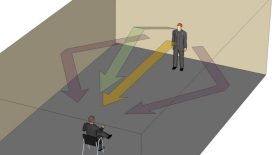
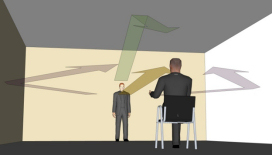
 |
 |
Room acoustic in general and reverberation in particular are based solely on reflections in the room, reflections on walls, floor and ceiling, reflections on each and every piece within the room.
Because of human's ability to sort out different reflections and to organize the received audible signal in a very sophisticated way to localize original sound sources and their reflections in the room so-called "good acoustics" are possible. "Good acoustic" is always a mixture of direct and reflected sounds and the reverberation field.
![]() See: Precedence-Effect
See: Precedence-Effect
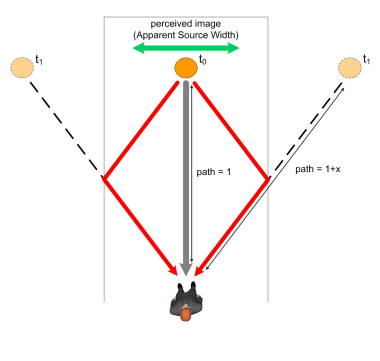
 | 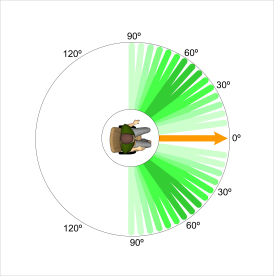 |
|
reflection angles received by most people as good sounding |
"translated" into hearing angles |
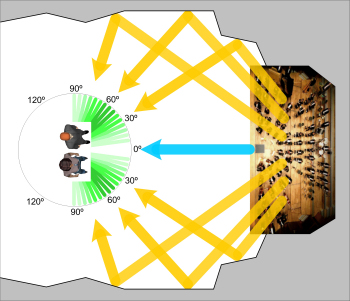 |
"translated" into concert hall acoustic |
 |
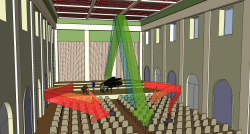 |
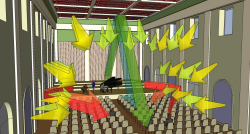 |
| early side reflections - Apparent Source Width (ASW) - |
early ceiling reflections |
reverberation field - Envelope (LEV) - |
Surround sound systems in compliance with the ITU standard ITU-R BS-775-2 are not able to represent the necessary room reflections that make a classical concert in a good concert hall enjoyable ! Because of the way the human hearing system is built, a side phantom image (as the front phantom image of two stereo speakers) cannot be created and a surround sound system by definition creates "only" ambience sound and side and rear effects. A surround sound system for classical music would need to have side speakers at 60 degrees ...
With the more variable setup of a 7.1 installation in compliance with ITU-R BS-775-2 and a side speaker placement as much to the front as possible a compromise could be reached but no recordings mixed this way are available ..
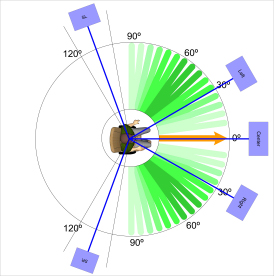 | 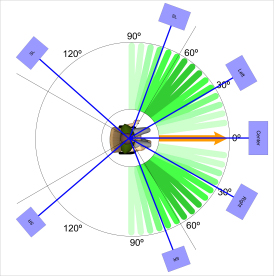 |
|
ITU-R BS-775-2 (5 ch.) and "good" side reflections | ITU-R BS-775-2 (7 ch.) and "good" side reflections |
|
surround sound systems and classical music preferences don't fit ! |
||
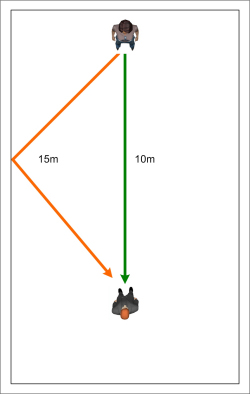 |
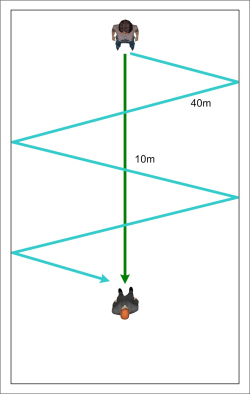 |
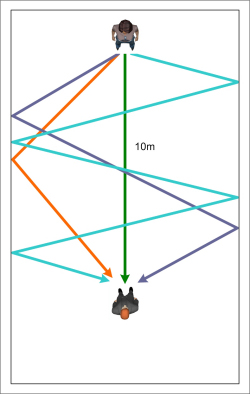 |
typical reflections within the first 15 to 80 msec in a room with flat straight walls. These few first reflections represent most of the received room impression ("good" or "bad" acoustic). | ||
 |
 |
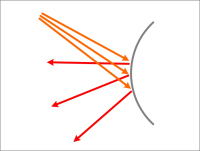 |
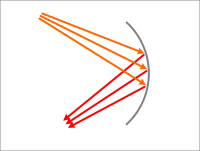 |
| straight reflection | diffuse reflection | concave reflection | convex reflection |
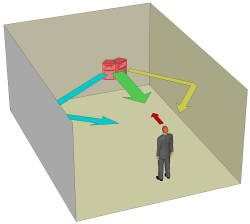 |
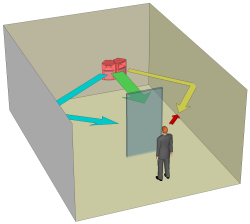 |
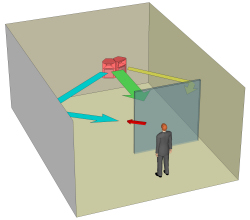 |
|
| first wave front from direct sound, straight source direction |
'first' wave front from shortest reflection changed source direction |
'first' wave front from second reflection changed source direction |
|